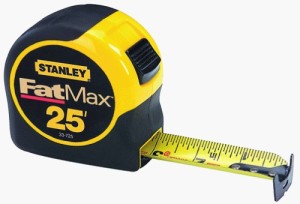Finding Good Metrics for Business Success
 Large organizations, with sophisticated management systems track performance measurements with a religious fervor. What about small businesses and individuals? Do they need and have these measurements of business success? Good metrics go beyond the traditional sales and profit figures from the financial statements. These are measurements of history or time passed. Good metrics measure the present and future trends. They indicate issues that can be addressed in the present, not issues that must recalled from the past.
Large organizations, with sophisticated management systems track performance measurements with a religious fervor. What about small businesses and individuals? Do they need and have these measurements of business success? Good metrics go beyond the traditional sales and profit figures from the financial statements. These are measurements of history or time passed. Good metrics measure the present and future trends. They indicate issues that can be addressed in the present, not issues that must recalled from the past.
Years ago, I joined a very successful privately-owned company. Within a few weeks of my arrival, I  was concerned that the monthly financial report was usually published four to five weeks after the closing of the month and was somewhat incomplete. I discussed the issue with the company owner, who didn’t show much concern. His comment was that he could tell the current state of profitability by walking through the plant and listening to the sound of the machinery. The higher the level of machine noise indicated higher levels of profits. He also had a unique way of measuring cash flow. Every Thursday night he would play poker. Every Thursday morning he would request poker money from petty cash. If the funds for poker were there, all was well. His managers made a point to have those funds available.
was concerned that the monthly financial report was usually published four to five weeks after the closing of the month and was somewhat incomplete. I discussed the issue with the company owner, who didn’t show much concern. His comment was that he could tell the current state of profitability by walking through the plant and listening to the sound of the machinery. The higher the level of machine noise indicated higher levels of profits. He also had a unique way of measuring cash flow. Every Thursday night he would play poker. Every Thursday morning he would request poker money from petty cash. If the funds for poker were there, all was well. His managers made a point to have those funds available.
As the plant manager of a manufacturing plant, I made a habit of walking the floor at the start of our day shift (6:30 AM). I became concerned that at the appointed time to start work, many of the scheduled machines were not running. Workers were returning from the restroom or cafeteria and some were still reading the morning paper. We decided to start a metric on the percentage of machines running at the beginning of a shift. Over the course of a week, we observed that only 60% of the machines were running at 6:30 AM. A meeting was held with all the employees to discuss the issue. Charts were posted on bulletin boards showing the percentage of machine running each morning. The following day 98 % of the machines were running and that percentage continued. No new equipment was needed. No employee disciplinary action was required. New positive habits replaced old unproductive habits. Change occurred without conflict or any unusual expense.
As a small business owner, think about what simple metrics you can use and are easy to track. In retailing, it might be daily sales or stock-outs. In a medical office, it could be patient’s wait time. In a service department, it might be telephone response time. In a sales department it might be backlog, the value of new proposals generated this week, or the percentage of proposals closed. With the selection, measurement, and reporting of any of these or others, management calls attention to the issues that are associated with the metric and prioritizes the list of things people must do on a daily basis.
 Individuals also need metrics. Baseball pitchers track their earned run average. Track stars track their workout speeds each day. Students track their grades in class. People who want to lose weight track their calories. Salesmen track the number of calls they make each day. Having metrics is the key part of any personal development program.
Individuals also need metrics. Baseball pitchers track their earned run average. Track stars track their workout speeds each day. Students track their grades in class. People who want to lose weight track their calories. Salesmen track the number of calls they make each day. Having metrics is the key part of any personal development program.
In management coaching, we often find that organizations lack meaningful metrics. It is an essential part of the goal planning process. It is a statement of current conditions. In most cases, it is the first thing we do with our clients. In large organizations computerized data retrieval may be necessary. Elsewhere simple observations and a note book are all that is necessary. In many cases, just the establishing of the metric will cause positive change to occur. In others, goal setting and action plans may be required. Change starts with being able to understand and measure the current state of performance. A good business coach works with a client to get started with metrics and achieve greater levels of business success.
